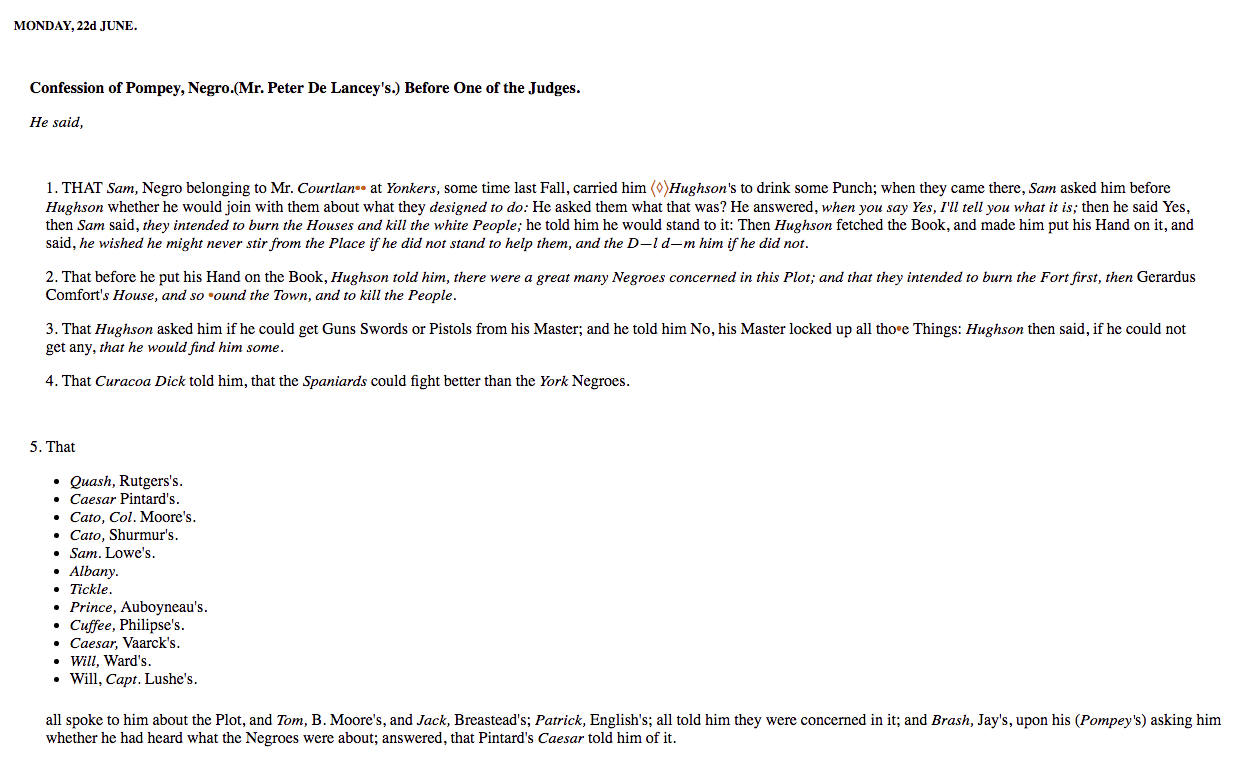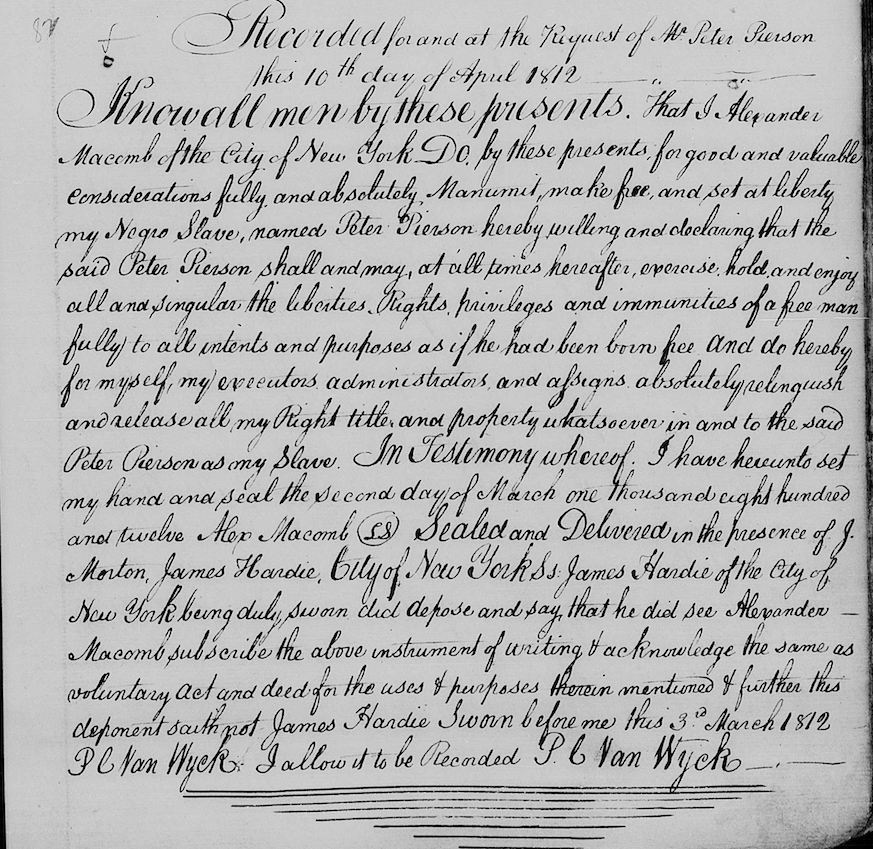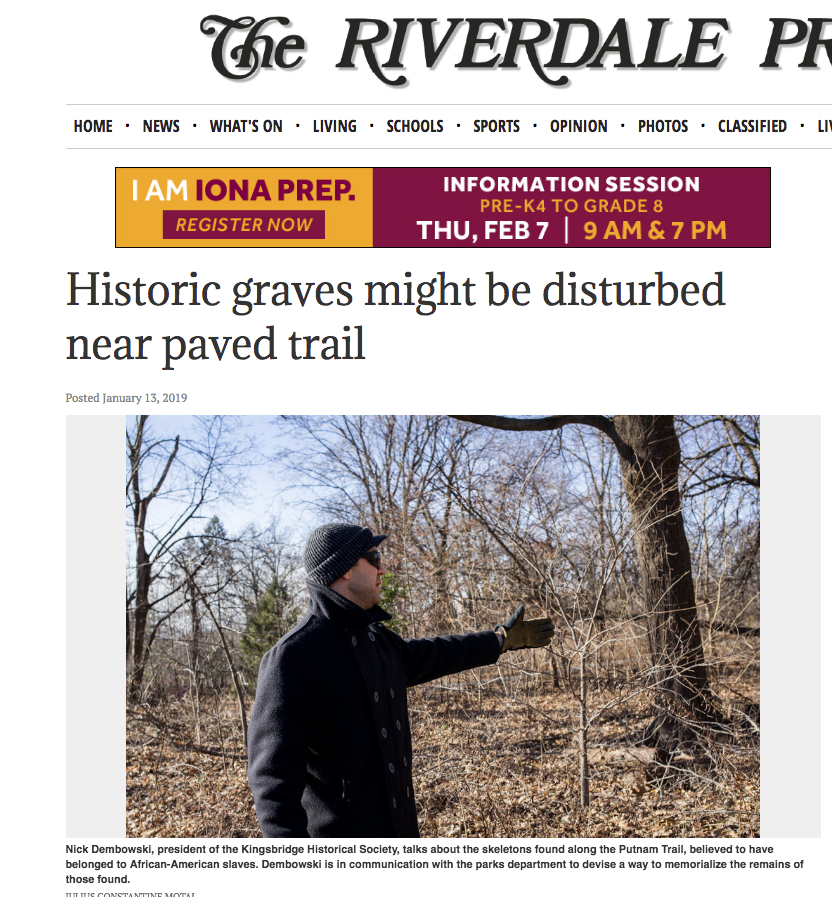Home › Forums › The Colonial Era › Historic Black Kingsbridge 1698-1850 – A Community Revealed in Documents
Tagged: Conspiracy of 1741
- This topic has 5 replies, 2 voices, and was last updated 3 years ago by
 ndembowski.
ndembowski.
-
AuthorPosts
-
-
December 10, 2018 at 2:37 am #796
I have a new article up on the “Articles” page: “Historic Black Kingsbridge 1698-1850 – A Community Revealed in Documents”
If you’ve read some of my other forum posts, you’ve probably seen that I have written in dribs and drabs about the Black people that lived in the neighborhood in the colonial period. I’ve been drawn to the topic for a number of reasons. One is that it has not been written about before (or ever really studied at all) in the hyper-local sense. Another reason is that I was truly surprised about what I learned–that there was a sizable Black community for about 150 years of the early history of the neighborhood. And not only were they here, but they most likely had a role in building some of our oldest landmarks: the Van Cortlandt House, the Albany Post Road, Van Cortlandt Lake, and even the King’s Bridge itself. Lastly, what truly compelled me to learn about this community was an interest in the people themselves. The extraordinary circumstances of their lives and the fragmentary details of their stories boggles the mind and challenges the imagination. But with enough imagination, you can begin to picture people like Piero, the enslaved miller who worked for the Van Cortlandts standing on the banks of Van Cortlandt Lake. One thing that is frustrating is how limited the information is. The documents, written from the colonists’ perspective, do not paint a picture of who these people were as individuals but rather focus on their contributions to the bottom line of people like the Van Cortlandts. I am hoping that subject matter experts (which I am not) can look at this information and piece together what these peoples’ lives must have been like.
Plus there is the urgent matter of the African burial ground in Van Cortlandt Park. It is imperative that the entire burial ground be studied by archeologists, in my opinion, before part of it gets paved over in 2019 (as is currently planned).
-
January 14, 2019 at 1:34 pm #832
There is an article in this week’s Riverdale Press about the African burial ground in Van Cortlandt Park and the impending paving of the Putnam Trail.
The area will be studied using ground penetrating radar and I am very curious as to what the findings are. My hunch is that there probably are not burials directly under the trail but it is impossible to know unless the area is studied thoroughly. I think there is a strong possibility that burial sites could be discovered immediately to the west of the trail.
-
June 20, 2020 at 12:28 am #1479
As a Juneteenth update, I have found a few more things since my article about the enslaved people on Van Cortlandt Plantation:
1) The date in the article’s title, 1698, comes from the first record that I could find indicating the presence of enslaved Black people here. Since writing the article, I found an earlier record in the estate inventory of George Tippett, who lived near today’s Van Cortlandt Lake:

George Tippett left a debt to “Barns Course of N. yorke for one neagro.” The date of this estate inventory is 1675.
2) I also found a reference to an enslaved man named Sam, who was held by Frederick Van Cortlandt–the first owner of the Van Cortlandt House in the park. Sam was caught up in the slave rebellion of 1741 in New York City. The story of what happened during the rebellion is quite complicated as the subsequent trial turned into a witch-hunt. Historians are divided as to what extent the rebellion plot was real or imagined. The published manuscript reveals that Sam confessed to recruiting other enslaved Black people in the plot. Many of the alleged plotters were burned at the stake or gibbetted. Sam was exiled to the island of Madeira as punishment. Below are some sections of the manuscript that was published after the trial. For an exhaustive history of this rebellion and trial read <span style=”text-decoration: underline;”>New York Burning</span> by Jill Lepore.


-
June 20, 2020 at 2:45 am #1480
I have an interesting book, “The Plotters – The New York Conspiracy of 1741” by Irving Werstein. What is real good about the book is its listing of source material. However, this is a subject that has limited resources and truthful facts.
-
April 12, 2021 at 8:46 pm #1926
The article I wrote about Van Cortlandt Plantation suggests that a free Black man that lived in the neighborhood named Peter Pierson could have been a descendant of Piero, the miller who worked on Van Cortlandt Plantation. I just came across a document that casts some doubt on that theory. In 1812, Alexander Macomb, who owned a good portion of Kingsbridge around today’s 230th Street, manumitted a man named Peter Pierson. So, the Peter Pierson who shows up in the census in our neighborhood could have been held by Alexander Macomb as opposed to the Van Cortlandts.

-
April 13, 2021 at 2:57 pm #1927
I just received an interesting email comment about this, which suggested the possibility that Peter Pierson could have been a descendant of the miller on Van Cortlandt Plantation but ALSO enslaved by Alexander Macomb. That is entirely possible. Local people did sell enslaved people to one another. The Macombs, like the Van Cortlandts, operated mills on their property. The Macomb mill was much larger and was powered by the shifting tides on the Spuyten Duyvil Creek. It was located just next to the King’s Bridge. The below image is from a later date, of course.
Also, I wanted to share this very well done video series about Cesar, the enslaved miller that lived and worked at Frederick Philipse’s mills in Sleepy Hollow. It stands to reason that the mill in today’s Van Cortlandt Park would have looked very similar:
Part 1 – The Miller and His Apprentice
Part 2 – Caesar’s Skills
Part 3 – Recognition for Caesar
-
-
AuthorPosts
- You must be logged in to reply to this topic.
